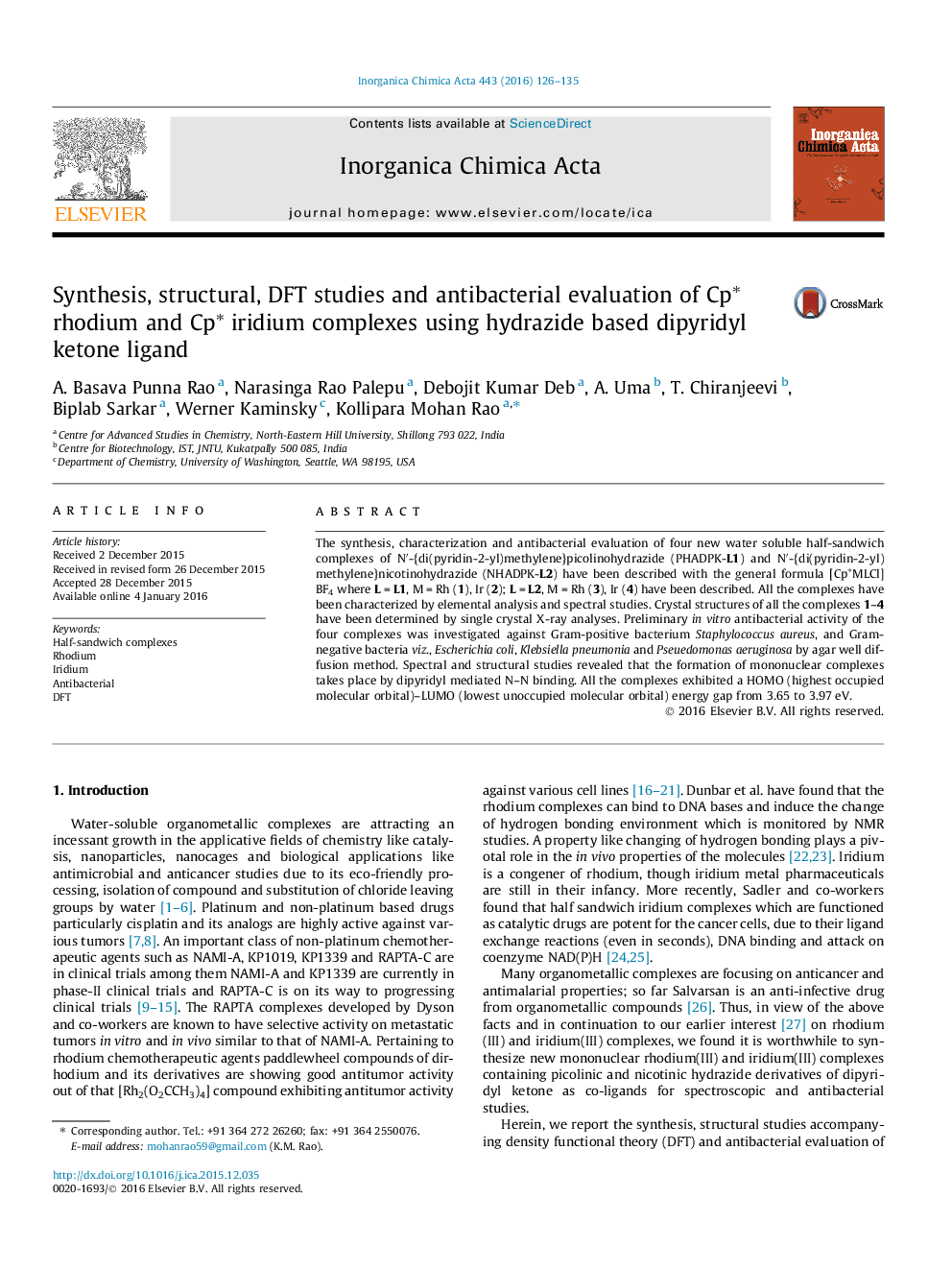| Article ID | Journal | Published Year | Pages | File Type |
|---|---|---|---|---|
| 1306427 | Inorganica Chimica Acta | 2016 | 10 Pages |
•Four new water-soluble rhodium and iridium compounds were synthesized.•Antibacterial activity studied for one Gram-positive and three Gram-negative pathogens.•Orbital occupancy and HOMO–LUMO energy gaps were rationalized by DFT studies.
The synthesis, characterization and antibacterial evaluation of four new water soluble half-sandwich complexes of N′-{di(pyridin-2-yl)methylene}picolinohydrazide (PHADPK-L1) and N′-{di(pyridin-2-yl)methylene}nicotinohydrazide (NHADPK-L2) have been described with the general formula [Cp∗MLCl]BF4 where L = L1, M = Rh (1), Ir (2); L = L2, M = Rh (3), Ir (4) have been described. All the complexes have been characterized by elemental analysis and spectral studies. Crystal structures of all the complexes 1–4 have been determined by single crystal X-ray analyses. Preliminary in vitro antibacterial activity of the four complexes was investigated against Gram-positive bacterium Staphylococcus aureus, and Gram-negative bacteria viz., Escherichia coli, Klebsiella pneumonia and Pseuedomonas aeruginosa by agar well diffusion method. Spectral and structural studies revealed that the formation of mononuclear complexes takes place by dipyridyl mediated N–N binding. All the complexes exhibited a HOMO (highest occupied molecular orbital)–LUMO (lowest unoccupied molecular orbital) energy gap from 3.65 to 3.97 eV.
Graphical abstractWater soluble half sandwich rhodium and iridium mono nuclear complexes of hydrazide based dipyridyl ketone ligands have been synthesized, characterized and their structural studies and antibacterial activity against four bacteria viz., Staphylococcus aureus MTCC96; Escherichia coli MTCC739; Klebsiella pneumonia MTCC2653; Pseuedomonas aeruginosa MTCC2453 has been observed.Figure optionsDownload full-size imageDownload as PowerPoint slide
